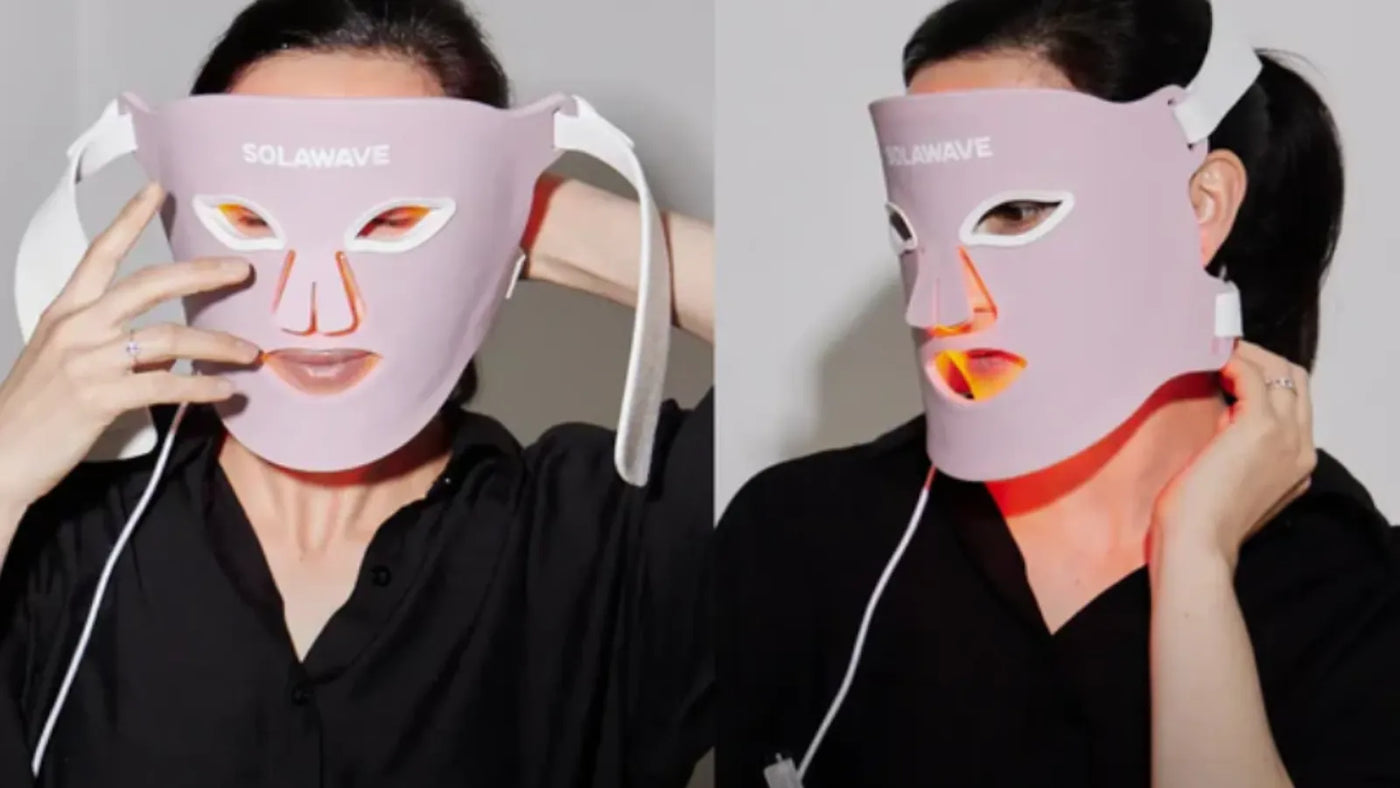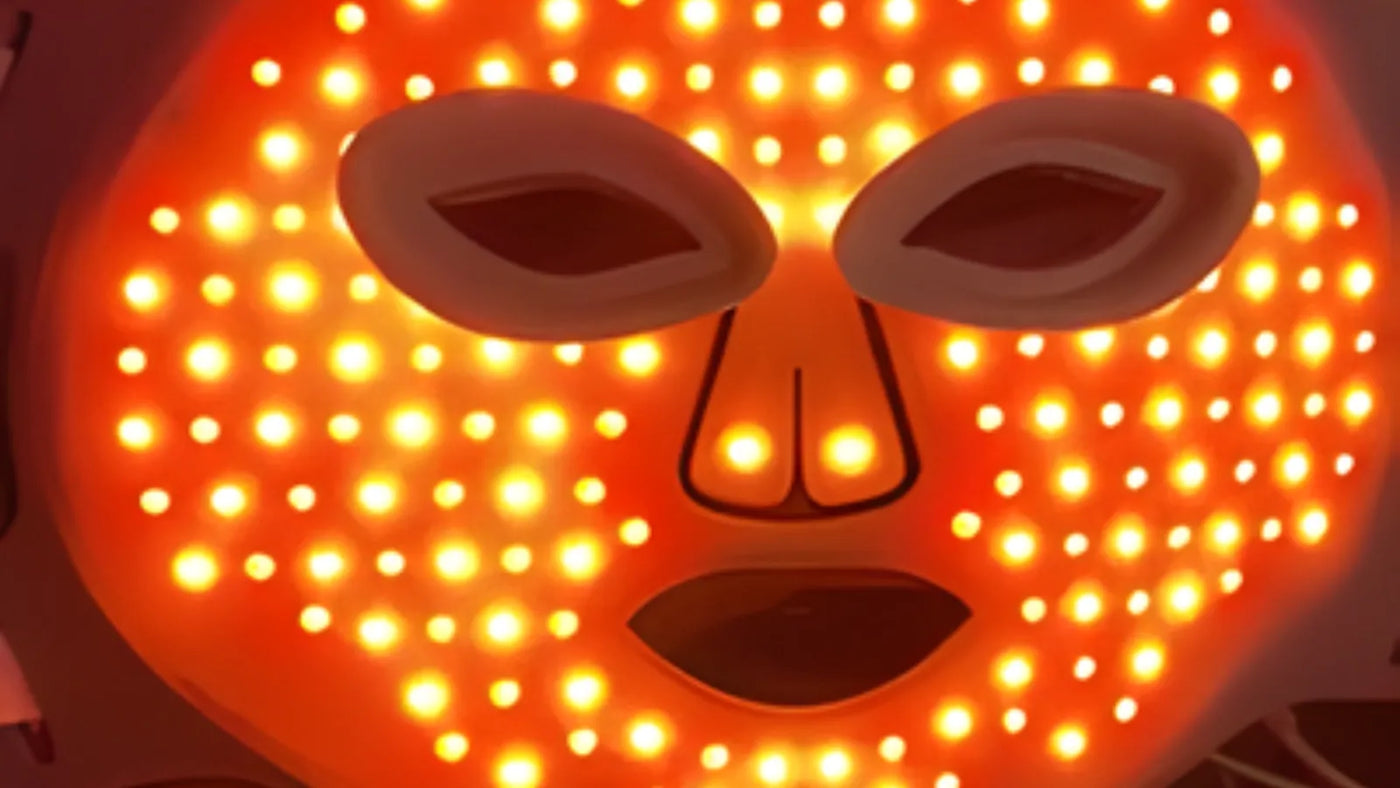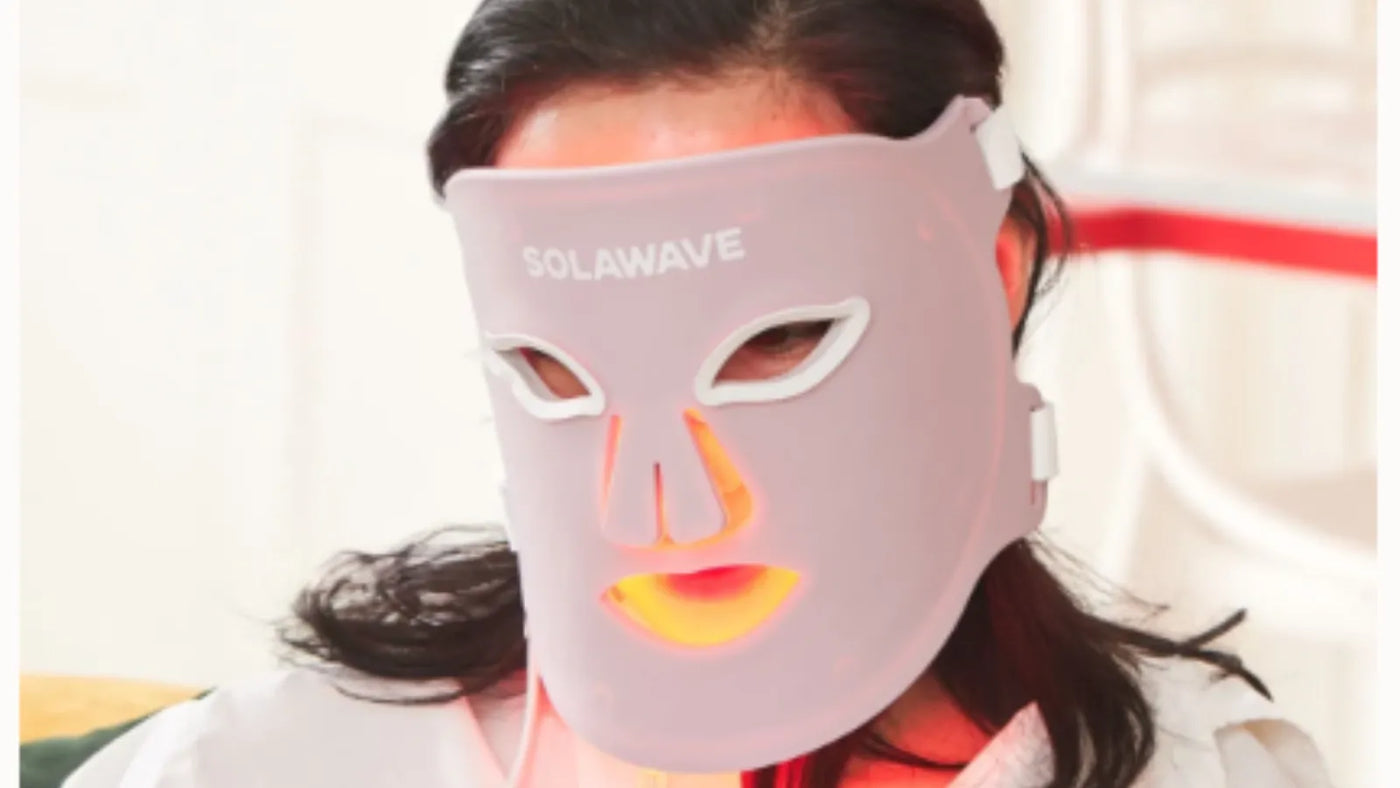

Red Light Therapy For Joint Pain: Everything To Know
Joint pain is a common issue that can affect anyone, regardless of age or lifestyle. Whether it’s a dull ache or sharp discomfort, joint pain can make everyday activities like walking, climbing stairs, or even typing feel challenging and frustrating. For many people, this discomfort can interfere with work, hobbies, and overall quality of life.
As a result, there’s growing interest in alternative approaches to managing joint pain. One option that’s gained attention in recent years is Red Light Therapy, with people exploring this technology in hopes of finding relief when traditional treatments aren’t enough or come with unwanted side effects.
However, it’s important to note from the start that Red Light Therapy devices are not a permanent cure or solution for joint pain or any medical condition. While some individuals may experience some relief or improvement, these devices should be viewed as one part of a broader approach to joint health. Always consult with a healthcare professional before starting any new therapy, and remember that proven medical treatments remain the foundation for managing joint pain effectively.
With that, let's talk about everything you need to know about the potential of using red light therapy for joint pain.
What Is Joint Pain?
Joint pain refers to any discomfort, soreness, or aching sensation that occurs where two or more bones meet in your body. Joints are essential for movement, connecting your bones and allowing you to bend, twist, and perform everyday activities. When pain develops in these areas, it can range from mild and occasional to severe and persistent.
Common symptoms of joint pain include stiffness, swelling, redness, and a decreased range of motion. You might notice that your joints feel tender to the touch or that they make it difficult to move freely. For some, joint pain is accompanied by warmth or a sensation of grinding or popping when moving the affected area.
Joint pain is extremely common, especially as people age. While it can affect anyone, it is most frequently seen in adults over the age of 40. Certain groups, such as athletes, individuals with physically demanding jobs, and those with a family history of joint problems, may be at higher risk. Women are also more likely than men to experience some types of joint pain, particularly those related to autoimmune conditions.
What Causes Joint Pain?
Joint pain can have many different causes — here are some of the most common:
Osteoarthritis: This is the most common form of arthritis, caused by the gradual breakdown of cartilage, which is the protective tissue at the ends of your bones. As cartilage wears away, bones begin to rub against each other, leading to pain, swelling, and stiffness. Osteoarthritis typically develops slowly and worsens over time, often affecting the knees, hips, hands, and spine.
Rheumatoid Arthritis: Unlike osteoarthritis, rheumatoid arthritis is an autoimmune condition. This means your immune system mistakenly attacks the lining of your joints, causing inflammation, pain, and eventually joint damage. Rheumatoid arthritis often affects joints on both sides of the body, such as both wrists or both knees, and can lead to long-term disability if not managed properly.
Injuries (Sprains, Strains, Fractures): Accidents, falls, or sports injuries can cause acute joint pain. Sprains involve stretched or torn ligaments, while strains affect muscles or tendons. Fractures, or broken bones, can also impact the joints and lead to pain that may persist even after healing.
Overuse and Repetitive Motion: Repeating the same movement over and over—such as typing, running, or lifting—can strain the joints and surrounding tissues. This overuse can lead to conditions like tendinitis or bursitis, which cause pain and inflammation in the affected area.
Inflammatory Conditions (Gout, Lupus): Gout is a type of arthritis caused by a buildup of uric acid crystals in the joints, leading to sudden and severe pain, often in the big toe. Lupus is another autoimmune disease that can cause joint inflammation and pain, along with other symptoms throughout the body.
Infections and Other Medical Conditions: Sometimes, infections can spread to the joints, causing a condition called septic arthritis. Other medical issues, such as Lyme disease or certain viral infections, can also result in joint pain.
Proven Treatments for Joint Pain
When it comes to managing joint pain, there are several proven treatments that can help you find relief and improve your quality of life. The right approach often depends on the underlying cause of your joint pain, its severity, and your overall health.
Standard Medical Treatments
Physical Therapy and Exercise Physical therapy is a cornerstone of joint pain management. A trained physical therapist can guide you through exercises that strengthen the muscles around your joints, improve flexibility, and restore range of motion. Regular, gentle exercise such as swimming, walking, or cycling can also help reduce stiffness and maintain joint function. Staying active is key to preventing further joint deterioration.
Medications Several types of medications are commonly used to manage joint pain. NSAIDs (Nonsteroidal Anti-Inflammatory Drugs), such as ibuprofen or naproxen, are available over the counter and can help reduce both pain and inflammation. For more severe pain, corticosteroids — powerful anti-inflammatory drugs — may be prescribed either in oral form or as injections directly into the affected joint. Additionally, DMARDs (Disease-Modifying Antirheumatic Drugs) are primarily used for autoimmune conditions like rheumatoid arthritis, as they help slow disease progression and prevent further joint damage.
Hot and Cold Therapy Applying heat or cold to the affected joint can provide temporary relief. Heat therapy (using warm towels or heating pads) helps relax muscles and increase blood flow, while cold therapy (using ice packs) can reduce inflammation and numb sharp pain.
Injections For more persistent or severe joint pain, your doctor may recommend injections. Corticosteroid injections can quickly reduce inflammation and provide relief that lasts from weeks to months. Hyaluronic acid injections, often used for knee osteoarthritis, help lubricate the joint, making movement smoother and less painful.
Surgical Options When conservative treatments aren’t enough and joint damage is severe, surgery may be considered. Common procedures include arthroscopy (minimally invasive joint repair), joint realignment, or total joint replacement. Surgery is typically reserved for cases where pain and loss of function significantly impact your daily life.
Lifestyle Modifications and Supportive Therapies
Weight Management Carrying excess weight puts additional stress on your joints, especially those in the knees, hips, and spine. Losing even a small amount of weight can significantly reduce pain and improve mobility.
Diet and Nutrition A balanced diet rich in anti-inflammatory foods such as fruits, vegetables, whole grains, and healthy fats can support joint health. Some people find that reducing processed foods and added sugars helps decrease inflammation.
Assistive Devices Braces, orthotics, canes, or walkers can help take pressure off painful joints and make movement easier. These devices provide stability and support, reducing the risk of falls and further injury.
Red Light Therapy for Joint Pain: How It Works, What the Research Says, and How to Use It
How Does Red Light Therapy for Joint Pain Work?
Red Light Therapy for joint pain uses specific wavelengths of light, typically in the red and near-infrared spectrum, to target tissues beneath the skin. The science behind this therapy centers on how these wavelengths interact with your body’s cells. When exposed to Red Light Therapy, cells absorb the light energy, which can stimulate the production of adenosine triphosphate (ATP), the molecule responsible for cellular energy. This boost in cellular energy may help support the body’s natural repair processes.
Near-Infrared Light Therapy is particularly important for joint pain because it penetrates deeper into tissues compared to visible red light. This deeper penetration allows the light to reach muscles, tendons, and even the joint itself, potentially offering greater benefits for those experiencing discomfort in these areas.
The biological mechanisms thought to be involved include increased cellular energy, modulation of inflammation, and improved circulation.
What Does the Research Say?
Research into Red Light Therapy for joint pain is ongoing, with a growing body of evidence exploring its potential benefits. Photobiomodulation (PBM), also known as low-level laser therapy, uses red and near-infrared light to stimulate healing, relieve pain, and reduce inflammation.
Scientific studies have identified that PBM primarily targets cellular components such as cytochrome c oxidase in mitochondria and calcium ion channels. When these components absorb light, it leads to increased cellular energy (ATP), modulation of calcium levels, and a brief burst of reactive oxygen species (ROS). These changes trigger a cascade of biological effects, including improved cell survival, increased protein synthesis, and enhanced tissue repair.
One of the most consistent findings in PBM research is its ability to reduce inflammation. This is particularly relevant for joint disorders, where inflammation is a major source of pain and stiffness. PBM has been shown to lower inflammatory markers in activated immune cells and reduce levels of reactive nitrogen species and prostaglandins in animal models. These anti-inflammatory effects have been observed not only in joints but also in other tissues such as the brain, lungs, and wounds.
Specific studies on osteoarthritis — a leading cause of joint pain — have demonstrated that low-level laser therapy can significantly reduce inflammatory cell infiltration and cytokine levels in animal models. Interestingly, lower doses of light appear to be more effective than higher doses, highlighting the importance of proper dosing for optimal results. While these findings are promising, researchers emphasize that more work is needed to fully understand the best protocols and to confirm these effects in larger human studies.
In addition to its anti-inflammatory properties, Red Light Therapy has been shown to reduce pain intensity in a variety of musculoskeletal conditions, including non-specific knee pain, osteoarthritis, pain after joint replacement surgery, fibromyalgia, and chronic back or neck pain. Clinical evidence suggests that photobiomodulation therapy offers a non-invasive, drug-free, and side-effect-free option for managing both acute and chronic pain.
Despite these encouraging results, it’s important to note that Red Light Therapy is not a cure for joint pain or any underlying medical condition just yet. Results can vary from person to person, and more large-scale, long-term studies are needed to determine the most effective treatment protocols. As research continues, Red Light Therapy remains a promising complementary approach for those seeking additional relief from joint pain.
How to Use Red Light Therapy for Joint Pain
If you’re considering Red Light Therapy for joint pain, it’s important to choose the right type of device. Options include panels, handheld devices, and wraps, each designed to deliver light to targeted areas of your body. Devices intended for joint pain typically use wavelengths that penetrate deeper tissues, such as those found in Near-Infrared Light Therapy.
To use Red Light Therapy safely, always follow the manufacturer’s instructions regarding session length, distance from the device, and frequency of use. Overuse or improper use can reduce effectiveness or cause unwanted side effects. Consult with a healthcare provider before starting any new therapy, especially if you have underlying health conditions or are taking medications. Remember, while Red Light Therapy may offer temporary relief for some individuals, it should be used as part of a comprehensive joint health plan and not as a replacement for proven medical treatments.
Conclusion
In summary, Red Light Therapy may offer temporary relief for joint pain when you use the correct device, but it is not a cure or permanent solution. For the best results, combine this approach with proven treatments and always consult with a healthcare professional about your joint health. Remember to use Light Therapy devices only as directed and as part of a comprehensive plan to manage joint pain and maintain your overall well-being.
Disclaimer: This article is intended for informational purposes only and should not be interpreted as medical advice or guidance. Always seek medical advice and care from a trusted healthcare professional.
Sources:
-
Mechanisms and applications of the anti-inflammatory effects of photobiomodulation - PMC
-
Mechanisms and applications of the anti-inflammatory effects of photobiomodulation - PMC





















